Experimental Research of a Water-Source Heat Pump Water Heater System
Abstract
:1. Introduction
2. Description of System and Experimental Set-Up
2.1. Working Process of the WSHPWH System
2.2. Experimental Facility and Procedures
2.3. Error Analysis
3. Data Analysis
4. Results and Discussion
4.1. Heating Performance of the WSHPWH System
4.2. Effect of Water Flux of the Evaporator
5. Conclusions
- (1)
- The WSHPWH system took 64 min to heat 50 L of water in a water tank from an initial temperature of 28 °C to 57 °C in the cyclic heating mode. However, when the water temperature was beyond 55 °C, especially at around 57 °C, the compressor discharge pressure was close to the general maximum, leading to compressor and system unsteadiness. The COP of the system decreased and the energy consumption increased with rising water temperature. Consequently, the temperature of water heated by the WSHPWH system should not exceed 55 °C for a higher thermal COP and lower energy consumption, as well as stable and safe operation.
- (2)
- The performance parameters of the WSHPWH system were analyzed at different evaporator water fluxes. The heating time decreased as the evaporator water flux increased. However, the heating performance of the WSHPWH system was optimum when the evaporator water flux was 8.7 L/min. As suggested by the condenser shell and tube side temperature at different evaporator water fluxes, the condenser is inefficient.
- (3)
- When attaining the same temperature, the exergy efficiency of the condenser was lower than those of the other equipment. Thus, it is essential to reduce its energy destruction when the heating efficiency of the WSHPWH system is improved.
Author Contributions
Acknowledgments
Conflicts of Interest
Nomenclature
| COP | coefficient of performance |
| Q | heating capacity (kW) |
| W | power (kW) |
| Ex | exergy rate (kW) |
| qm | mass flow rate (kg s−1) |
| h | specific enthalpy (kJ kg−1) |
| S | specific entropy (kJ kg−1 K−1) |
| T | temperature (K) |
| t | time (min) |
| Abbreviations | |
| 0 | environment state |
| comp | compressor |
| cond | condenser |
| in | inlet |
| out | outlet |
| re | refrigerant |
| w | Water |
| eva | evaporator |
| ε | exergy efficiency |
| HPWH | heat pump water heater |
| HP | heat pump |
| SWHP | seawater source heat pump |
| BWIS | beach well infiltration intake system |
| HCHE | helical coil heat exchanger |
| WSHPWH | water-source heat pump water heater |
| TXV | thermal expansion valve |
References
- Willem, H.; Lin, Y.; Lekov, A. Review of energy efficiency and system performance of residential heat pump water heaters. Energy Build. 2017, 143, 191–201. [Google Scholar] [CrossRef]
- Congedo, P.M.; Colangelo, G.; Starace, G. Simulations of horizontal ground heat exchangers: A comparison among different configurations. Appl. Therm. Eng. 2012, 33–34, 24–32. [Google Scholar] [CrossRef]
- D’Arpa, S.; Petrosillo, I.; Uricchio, V.; Zurlini, G.; Colangelo, G.; Starace, G. heating requirements in greenhouses farming in South of Italy: Evaluation of Ground Source Heat Pump Utilization. J. Energy Effic. 2016, 9, 1065–1085. [Google Scholar] [CrossRef]
- Congedo, P.M.; Colangelo, G.; Starace, G. Horizontal Heat Exchangers for GSHP. Efficiency and Cost Investigation for Three Different Applications. In Proceedings of the ECOS2005-18th International Conference on Efficiency, Cost, Optimization, Simulation and Environment, Trondheim, Norway, 20–22 June 2005; pp. 1–8. [Google Scholar]
- Shapiro, C.; Puttagunta, S. Field Performance of Heat Pump Water Heaters in The Northeast; NREL: Golden, CO, USA, 2013. [Google Scholar]
- Han, S.K.; Chae, K.H.; Hwang, D.K. A design case study on sea and river water source heat pump. In Proceedings of the Society of Air-Conditioning and Refrigerating Engineers of Korea (SAREK) Summer Annual Conference, Pyeongchang, Korea, 6–8 July 2011; pp. 1212–1217. [Google Scholar]
- Zheng, W.D.; Zhang, H.; You, S.J.; Ye, T.Z. The Thermal Characteristics of a Helical Coil Heat Exchanger for Seawater-source Heat Pump in Cold Winter. Procedia Eng. 2016, 146, 549–558. [Google Scholar] [CrossRef]
- Zheng, W.D.; Ye, T.Z.; You, S.J.; Zhang, H. The thermal performance of seawater-source heat pump systems in areas of severe cold during winter. Energy Convers. Manag. 2015, 90, 166–174. [Google Scholar] [CrossRef]
- Baik, Y.J.; Kim, M.; Chang, K.C.; Lee, Y.S.; Ra, H.S. Potential to enhance performance of seawater-source heat pump by series operation. Renew. Energy 2014, 65, 236–244. [Google Scholar] [CrossRef]
- Shu, H.W.; Duanmu, L.; Shi, J.; Jia, X.; Ren, Z.Y.; Yu, H.Y. Field measurement and energy efficiency enhancement potential of a seawater source heat pump district heating system. Energy Build. 2015, 105, 352–357. [Google Scholar] [CrossRef]
- Zheng, X.J.; You, S.J.; Yang, J.; Chen, G.F. Seepage and heat transfer modeling on beach well infiltration intake system in seawater source heat pump. Energy Build. 2014, 68, 147–155. [Google Scholar] [CrossRef]
- Postrioti, L.; Baldinelli, G.; Bianchi, F.; Buitoni, G.; Di Maria, F.; Asdrubali, F. An experimental setup for the analysis of an energy recovery system from wastewater for heat pumps in civil buildings. Appl. Therm. Eng. 2016, 102, 961–971. [Google Scholar] [CrossRef]
- Araz, M.; Hepbasli, A.; Biyik, E.; Shahrestani, M.; Yao, R.; Essah, E.; Shao, L.; Oliveira, A.C.; Ekren, O.; Günerhan, H. Performance evaluation of a building integrated photovoltaic (BIPV) system combined with a wastewater source heat pump (WWSHP) system. Energy Procedia 2017, 140, 434–446. [Google Scholar] [CrossRef]
- Liu, X.; Ni, L.; Lau, S.K.; Li, H. Performance analysis of a multi-functional heat pump system in heating mode. Appl. Therm. Eng. 2013, 51, 698–710. [Google Scholar] [CrossRef]
- Wang, Y.; Ren, Y.; Gu, Y.; Meng, Q. Comparison and Analysis of Heat Transfer Enhancement for Wastewater Heat Exchanger in Wastewater Source Heat Pump System. Procedia Eng. 2017, 205, 2736–2743. [Google Scholar] [CrossRef]
- Pei, G.; Li, G.; Ji, J. Comparative study of air-source heat pump water heater systems using the instantaneous heating and cyclic heating modes. Appl. Therm. Eng. 2011, 31, 342–347. [Google Scholar]





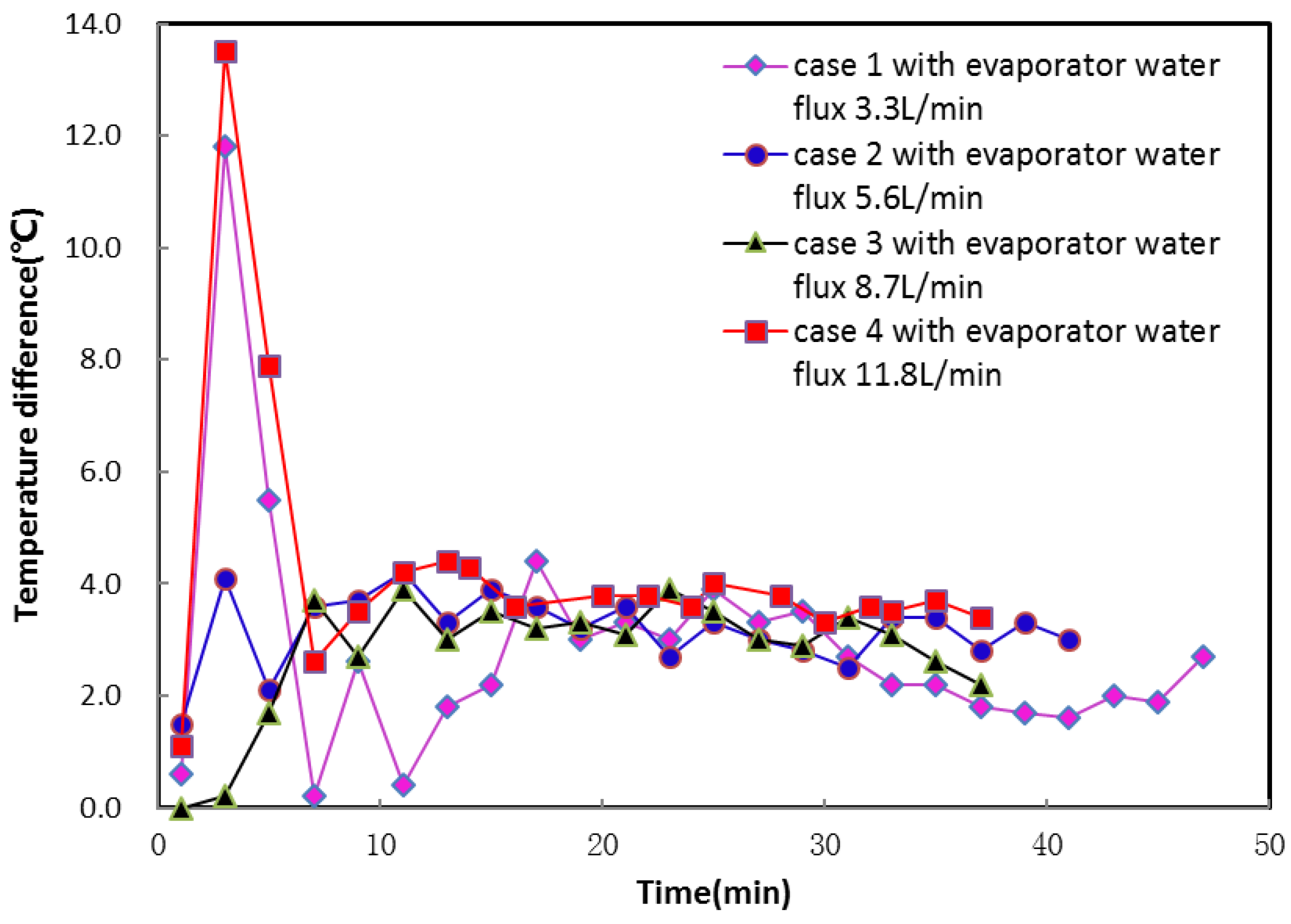
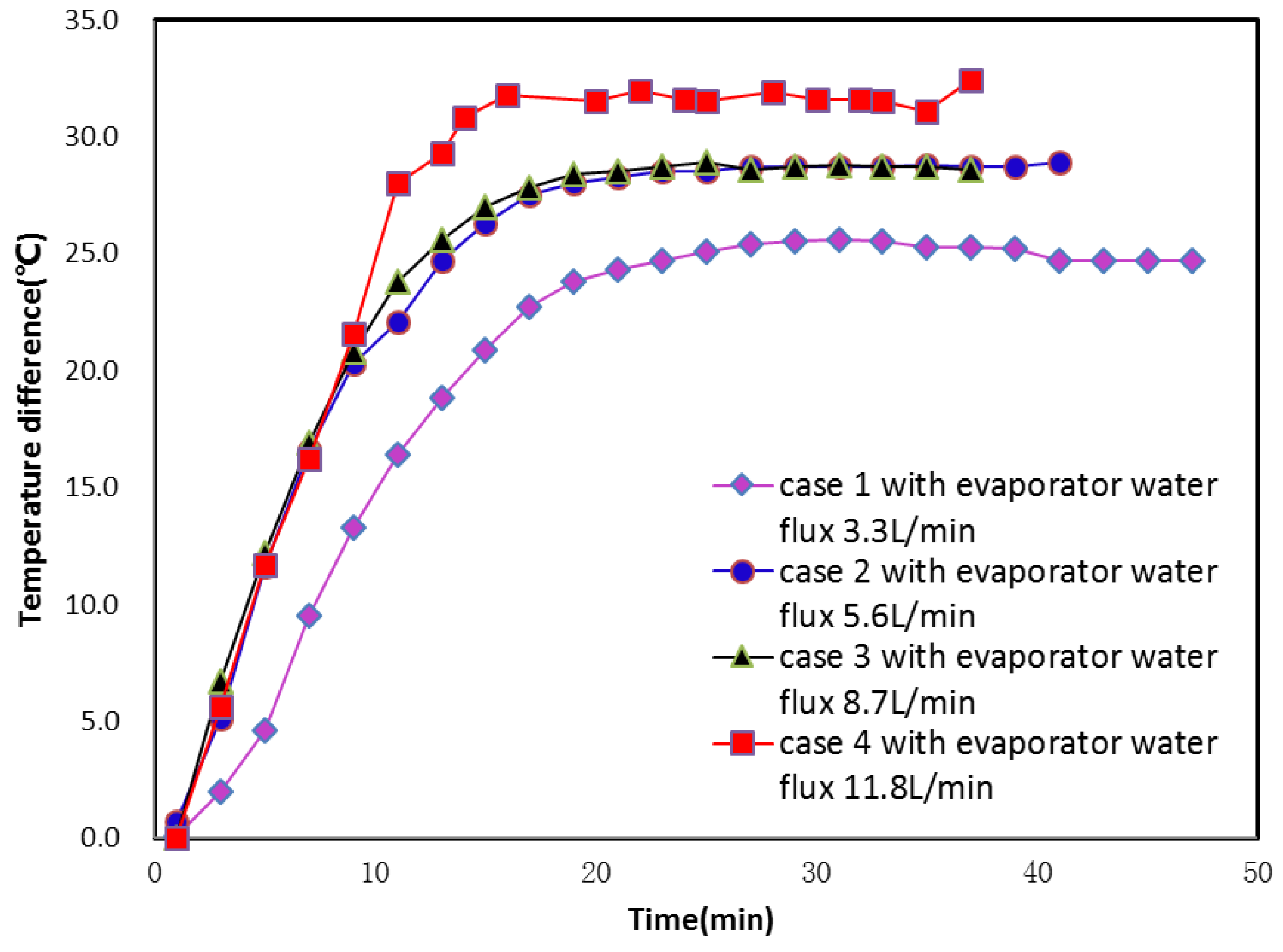
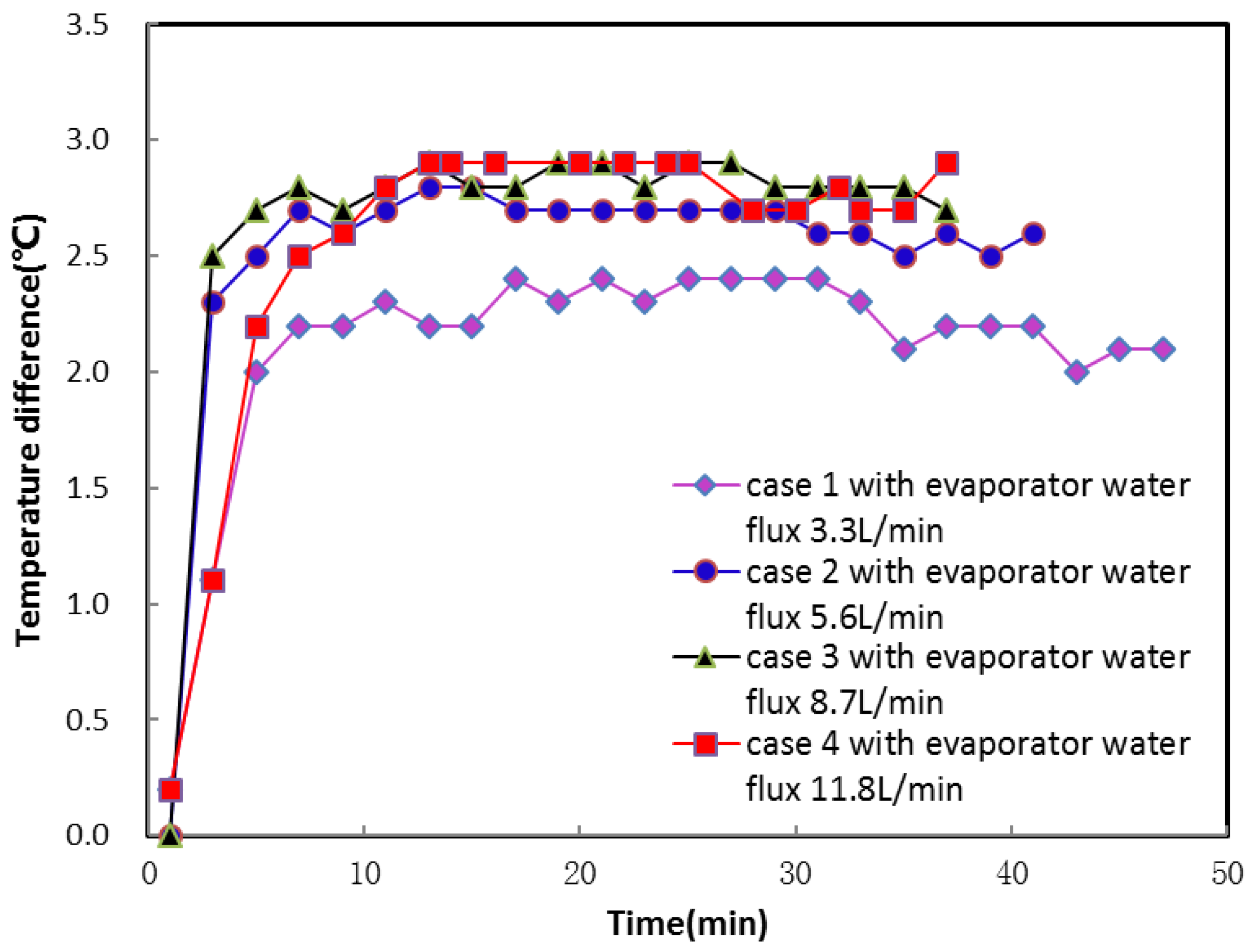

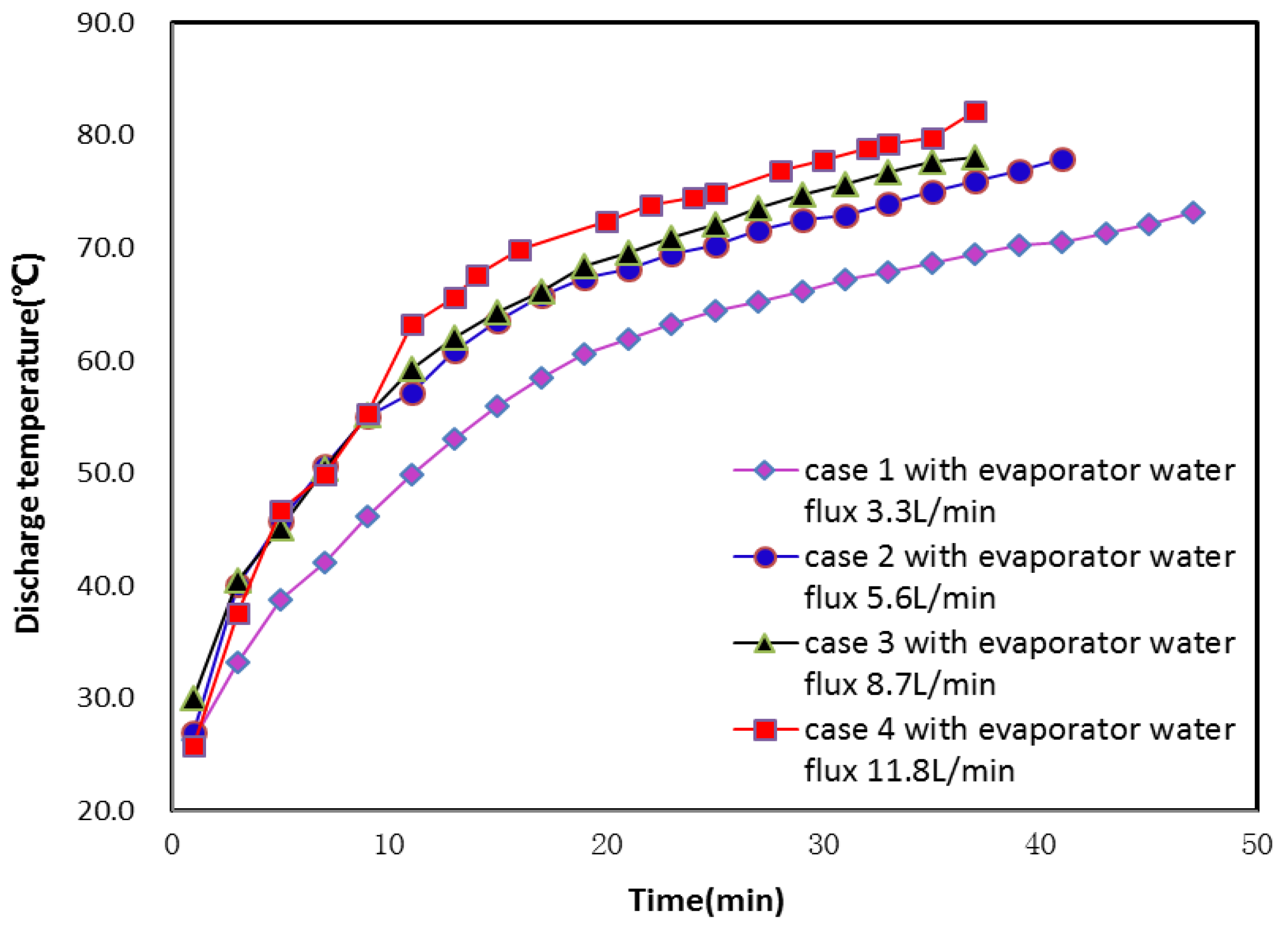
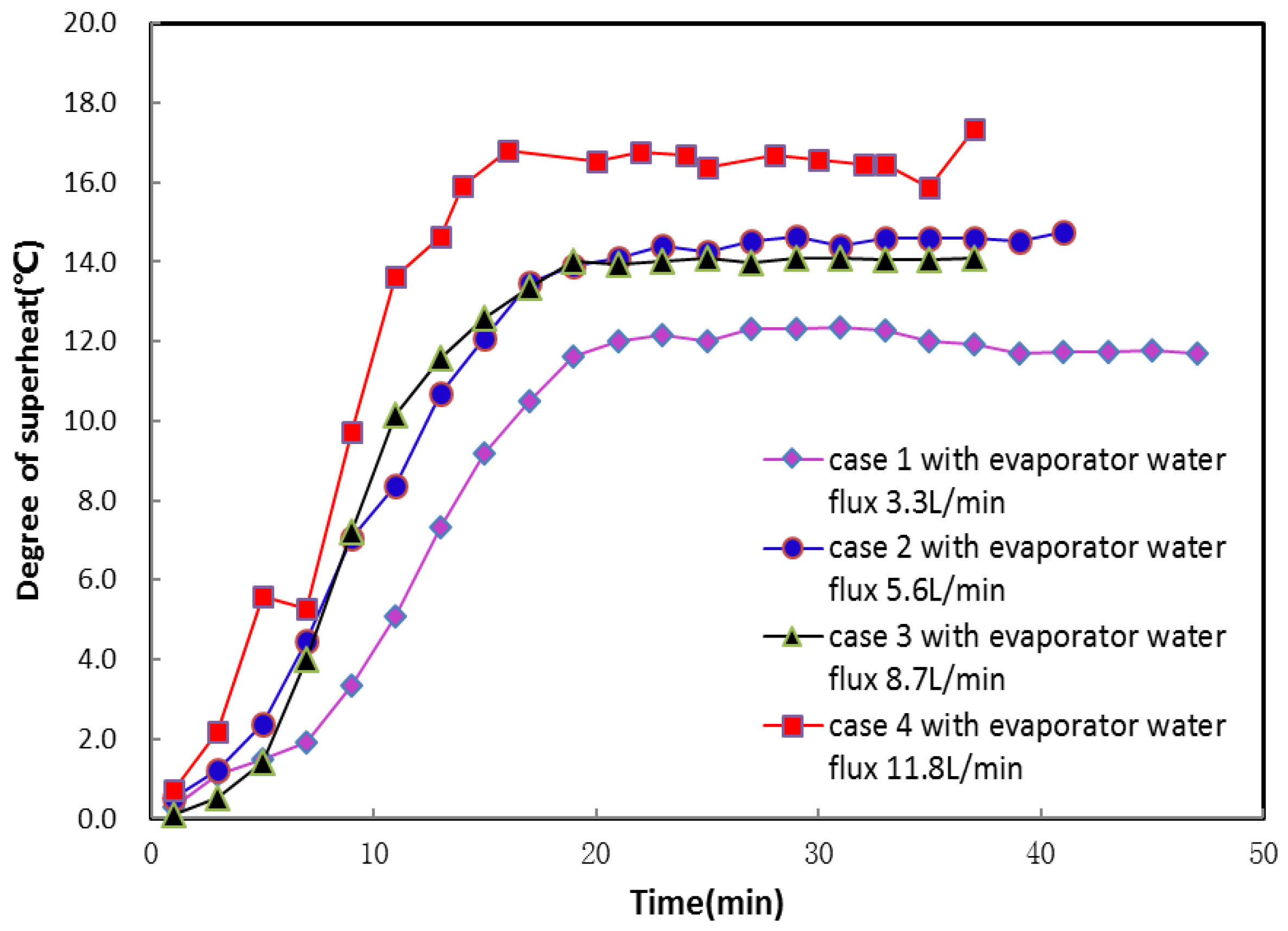



| Name | Type | Remarks |
|---|---|---|
| Compressor | Rotary | R134a, Rated input power: 0.597 kW, Displacement volume: 15.6 cm3/rev |
| Condenser | Double pipe | Core diameter: 25 mm, Outer diameter: 32 mm, Length: 1.2 m |
| Expansion valve | TXV | External balanced type |
| Evaporator | Double pipe | Core diameter: 25 mm, Outer diameter: 32 mm, Length: 1.2 m |
| Water tank | resistance | 150-L tank, thermal insulation material: polyurethane foaming plasticThermal insulation thickness: 50 mm |
| Case | Evaporator Water Flux (L/min) | Condenser Water Flux (L/min) | Evaporator Water Inlet Temperature (°C) | Water Volume (L) | Initial Temperature (°C) | Set Temperature (°C) |
|---|---|---|---|---|---|---|
| Case 1 | 3.3 | 14 | 23 | 50 | 30 | 50 |
| Case 2 | 5.6 | 14 | 23 | 50 | 30 | 50 |
| Case 3 | 8.7 | 14 | 23 | 50 | 30 | 50 |
| Case 4 | 11.8 | 14 | 23 | 50 | 30 | 50 |
© 2018 by the authors. Licensee MDPI, Basel, Switzerland. This article is an open access article distributed under the terms and conditions of the Creative Commons Attribution (CC BY) license (http://creativecommons.org/licenses/by/4.0/).
Share and Cite
Zhao, Z.; Zhang, Y.; Mi, H.; Zhou, Y.; Zhang, Y. Experimental Research of a Water-Source Heat Pump Water Heater System. Energies 2018, 11, 1205. https://doi.org/10.3390/en11051205
Zhao Z, Zhang Y, Mi H, Zhou Y, Zhang Y. Experimental Research of a Water-Source Heat Pump Water Heater System. Energies. 2018; 11(5):1205. https://doi.org/10.3390/en11051205
Chicago/Turabian StyleZhao, Zhongchao, Yanrui Zhang, Haojun Mi, Yimeng Zhou, and Yong Zhang. 2018. "Experimental Research of a Water-Source Heat Pump Water Heater System" Energies 11, no. 5: 1205. https://doi.org/10.3390/en11051205
APA StyleZhao, Z., Zhang, Y., Mi, H., Zhou, Y., & Zhang, Y. (2018). Experimental Research of a Water-Source Heat Pump Water Heater System. Energies, 11(5), 1205. https://doi.org/10.3390/en11051205




